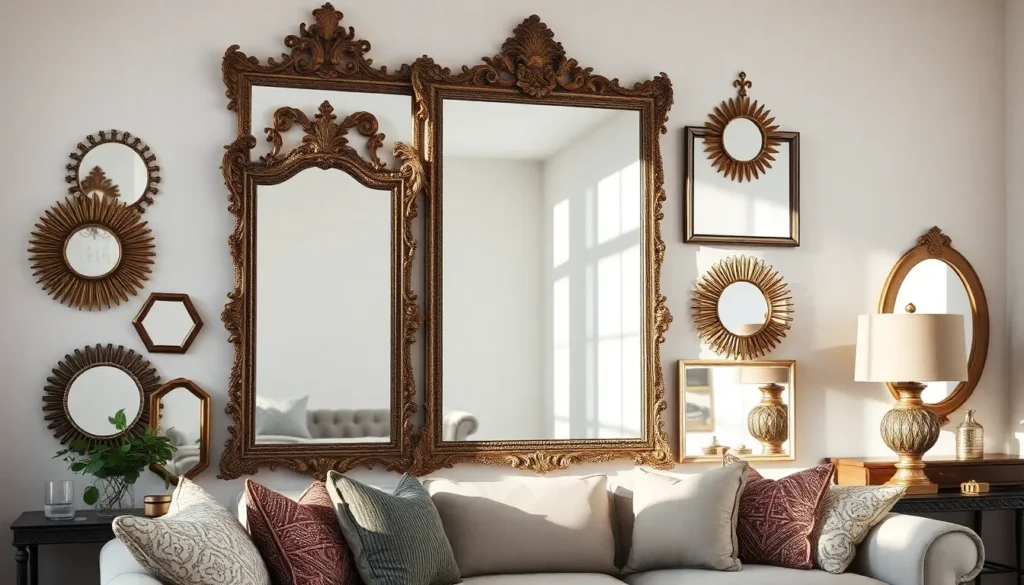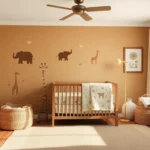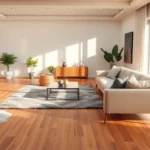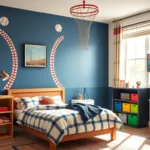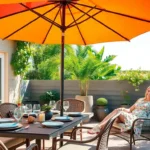Wall mirrors aren’t just functional pieces – they’re powerful design tools that can completely transform your living space. We’ve discovered that the right mirror placement and styling can make rooms appear larger, brighter, and more sophisticated while adding personality to any wall.
Whether you’re working with a cramped apartment or a spacious home, mirrors offer endless decorating possibilities that go far beyond the basic bathroom fixture. From creating stunning gallery walls to using oversized statement pieces, we’ll show you how to harness the magic of reflective surfaces.
Ready to unlock your home’s potential? We’re about to share game-changing wall mirror decorating ideas that’ll have your guests wondering how you became such a design expert. These proven strategies work in every room and suit any budget or style preference.
Create a Stunning Gallery Wall with Multiple Mirrors
Gallery walls featuring multiple mirrors transform ordinary spaces into captivating focal points that multiply light and visual interest throughout your room.
Mix Different Sizes and Shapes
Combining various mirror sizes creates ever-changing visual rhythm that draws the eye naturally across your wall. Start with one large statement mirror as your anchor piece, then surround it with medium and small mirrors to build depth. Round mirrors soften angular spaces while rectangular pieces add structure to flowing room designs.
Geometric shapes like hexagons, octagons, and sunburst mirrors inject contemporary flair into traditional settings. We recommend using no more than three different shapes to maintain visual cohesion. Oval mirrors work beautifully alongside circular ones, creating gentle curves that complement each other seamlessly.
Incorporate Varied Frame Styles
Frame diversity adds texture and personality to your mirror gallery while maintaining overall harmony. Mix wooden frames with metal ones, pairing rustic barn wood with sleek brass or black iron for striking contrast. Ornate vintage frames create drama when balanced with simple, modern pieces.
Color coordination keeps eclectic frame styles from appearing chaotic or overwhelming. Choose frames within the same color family, such as various shades of gold from antique brass to champagne, or stick to neutral tones like black, white, and natural wood. Metallic finishes reflect additional light, amplifying the brightening effect of your mirror collection.
Maintain Consistent Spacing
Proper spacing between mirrors ensures your gallery wall looks intentional rather than cluttered or sparse. We suggest keeping 2 to 4 inches between each mirror, depending on your wall size and mirror dimensions. Larger walls can accommodate wider spacing, while smaller areas benefit from tighter arrangements.
Planning your layout on the floor before hanging prevents costly mistakes and wall damage. Cut paper templates matching each mirror’s size and tape them to your wall first. This technique lets you experiment with different arrangements until you find the perfect configuration that balances visual weight across your space.
Transform Small Spaces with Strategic Mirror Placement
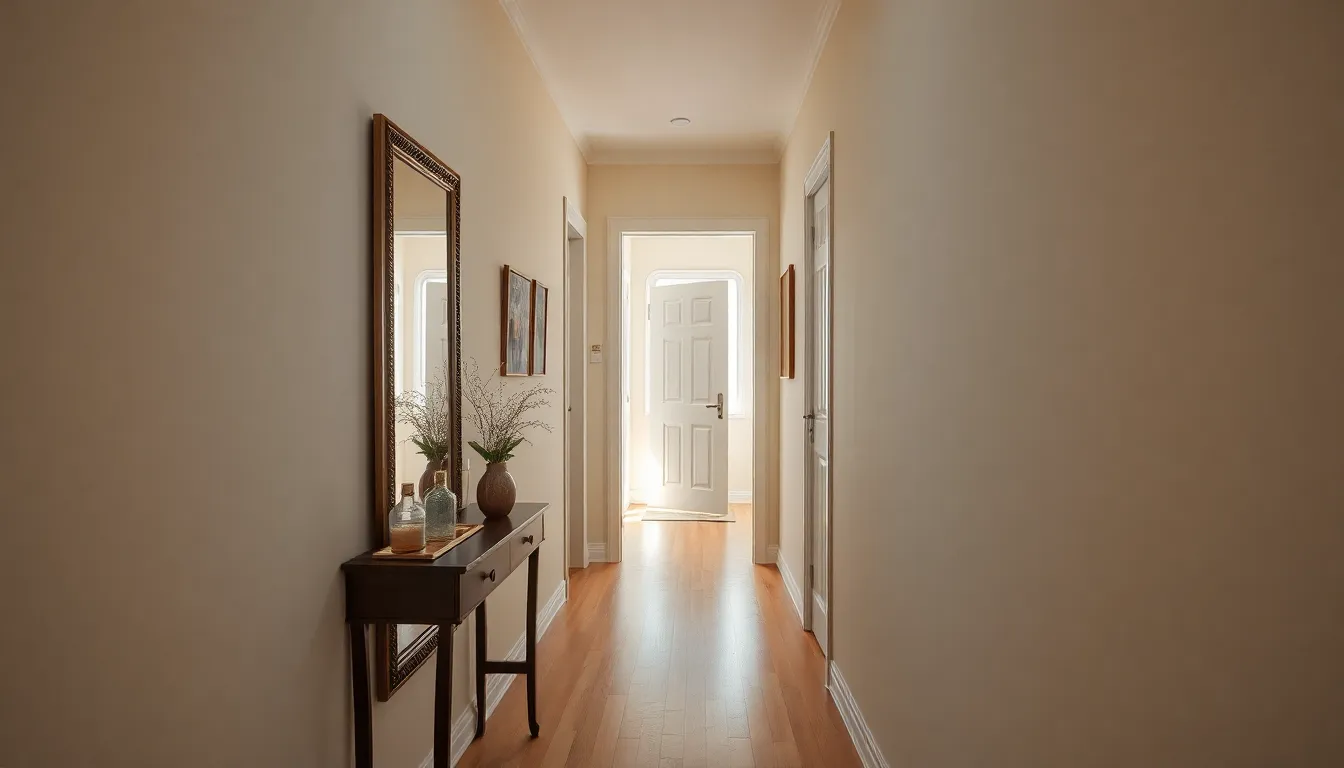
Smart mirror positioning can dramatically expand the perception of space in compact rooms. We’ll explore three proven techniques that interior designers use to maximize visual square footage.
Position Mirrors Opposite Windows
Positioning mirrors directly across from windows creates the illusion of an additional window while doubling natural light throughout your space. This strategic placement reflects outdoor views back into the room, making it feel brighter and more expansive than its actual dimensions.
We recommend choosing mirrors that are roughly two-thirds the width of your window for optimal light reflection. The reflected light bounces throughout the room, eliminating dark corners and creating a more open atmosphere. Large rectangular mirrors work exceptionally well for this technique, as they capture and redistribute the maximum amount of natural light.
Use Full-Length Mirrors in Narrow Hallways
Full-length mirrors installed in narrow hallways instantly make cramped passages appear longer and more spacious. The vertical reflection extends the perceived length of the corridor while adding functional value for daily use.
Mounting these mirrors on the longer wall creates the greatest visual impact, as the reflection extends the hallway’s perspective. We suggest positioning them at eye level for both aesthetic appeal and practical accessibility. Frameless or thin-framed options work best in tight spaces, as they won’t compete with the hallway’s proportions or create visual clutter.
Install Corner Mirrors to Open Up Tight Areas
Corner mirrors help open up confined spaces by reflecting light into typically shadowed areas and creating visual depth where walls meet. This placement technique transforms dead corners into active design elements that contribute to the room’s overall spaciousness.
We find that angled corner installations work particularly well in small bedrooms, bathrooms, or reading nooks where space feels compressed. The mirror’s reflection creates the illusion of extended space beyond the corner, while the angled placement catches and redistributes light from multiple directions throughout the room.
Design a Statement Wall with Oversized Mirrors
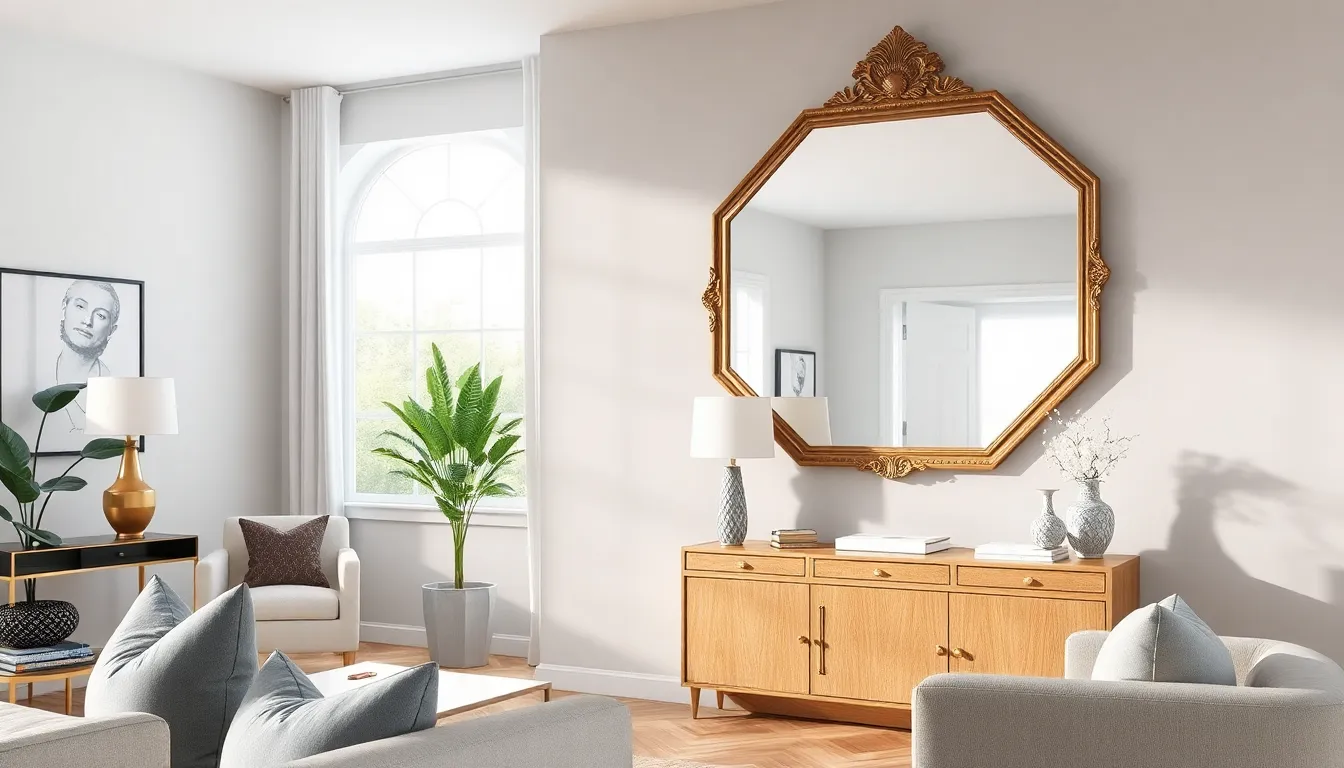
Oversized mirrors transform any room into a dramatic focal point while visually expanding tight or dark spaces by reflecting more light. We can create stunning visual impact by placing a single grand mirror above a fireplace or console table, or arranging multiple large mirrors in a staggered formation.
Choose Bold Geometric Shapes
Contemporary design trends favor mirrors in striking geometric forms that serve as standalone art pieces. Circles, hexagons, ovals, and irregular shapes add modern artistic touches to walls while creating ever-changing visual interest when grouped together. We recommend these geometric mirrors for minimalist, industrial, or eclectic settings where they can truly shine as statement pieces.
Layering different geometric shapes creates sophisticated visual rhythm throughout your space. Start with one large hexagonal or circular mirror as your anchor piece, then add smaller geometric shapes around it for balance. This approach works particularly well in living rooms and entryways where guests first experience your design aesthetic.
Select Ornate Vintage Frames
Mirrors with vintage inspired or ornate frames bring elegance and historical charm to modern interiors. Gold, brass, or distressed wood frames complement classic, transitional, or glam décor styles while adding rich texture and visual contrast. We’ve found these statement pieces work exceptionally well above mantels or in dining rooms where they can command attention.
Ornate frames create perfect conversation starters while reflecting your personal style preferences. Look for frames with intricate detailing, carved elements, or metallic finishes that coordinate with your existing hardware and fixtures. These mirrors often become the most photographed elements in your room due to their inherent beauty and craftsmanship.
Create Dramatic Lighting Effects
Positioning mirrors near light sources amplifies both natural and artificial light, making rooms appear brighter and more spacious instantly. We can enhance this effect by placing mirrors adjacent to windows or directly across from table lamps and floor lighting. This strategic placement doubles the light output while creating the illusion of additional windows.
Mirrored panels or mirrors with integrated LED strips create luxe, modern atmospheres in bathrooms, hallways, or home offices. These lighting enhanced mirrors provide both functional illumination and decorative appeal, particularly effective during evening hours when ambient lighting becomes most important. Consider installing dimmer switches to control the intensity and mood of your mirror lighting display.
Enhance Your Living Room with Decorative Mirror Arrangements
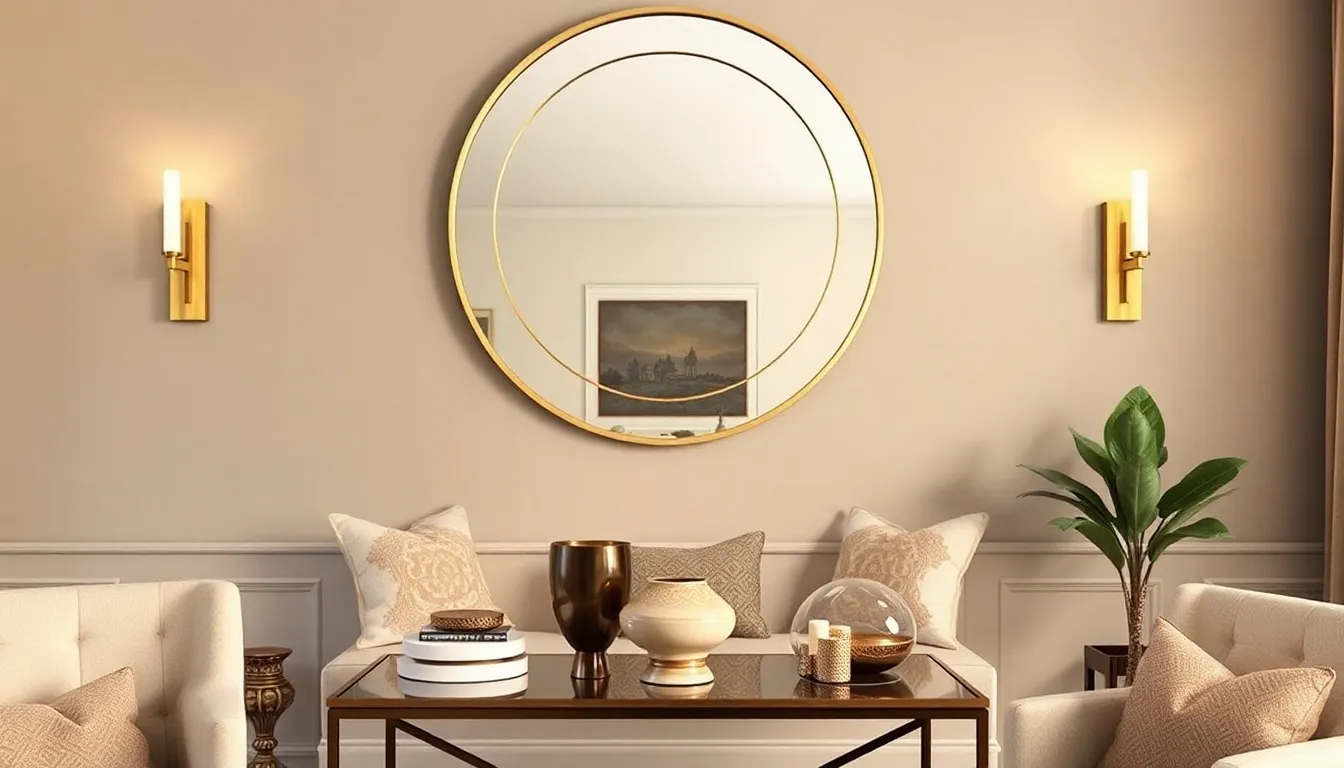
Living rooms become instantly more sophisticated when we incorporate thoughtful mirror arrangements that combine style with functionality. These strategic placements transform ordinary spaces into elegant showcases while maximizing natural light and visual depth.
Layer Mirrors with Wall Sconces
Pairing mirrors with wall sconces creates a sophisticated lighting solution that doubles the illumination in your living room. We recommend positioning mirrors directly above or adjacent to sconces to amplify light distribution and add depth to your walls. This layered approach works exceptionally well in modern, industrial, and traditional interior styles.
Installing sconces on either side of a large mirror creates symmetrical elegance while providing practical task lighting for reading areas. The reflected light bounces throughout the room, eliminating dark corners and creating a warm, inviting atmosphere. Wall mounted fixtures with adjustable arms allow you to direct light precisely where it’s needed while the mirror enhances the overall brightness.
Combine Mirrors with Artwork
Creating eclectic gallery walls by mixing mirrors with framed art produces ever-changing visual compositions that serve as conversation starters. We suggest pairing a large statement mirror with similarly sized artwork to establish balance, or arranging several small mirrors and art pieces in grid formations for structured appeal.
Organic clusters work beautifully when you vary the shapes and sizes of both mirrors and artwork throughout the arrangement. Round mirrors complement rectangular paintings, while geometric mirror shapes add modern flair to traditional photography. This technique adds personality and depth to blank walls while reflecting surrounding decor elements.
Frame coordination between mirrors and artwork creates cohesive gallery walls that feel intentionally curated. We recommend matching metallic finishes like brass, chrome, or black frames to unify diverse pieces within your collection.
Position Mirrors Above Furniture Pieces
Anchoring furniture groupings with strategically placed mirrors creates focal points while making areas feel more spacious and open. We position mirrors above sofas, console tables, and mantels to establish visual weight and draw the eye upward, effectively expanding the perceived ceiling height.
Mirrors above fireplaces serve dual purposes as functional decor and stunning focal points that reflect flickering flames throughout the room. The key is ensuring your mirror’s size and style complement the furniture below without overwhelming the space. We recommend choosing mirrors that span roughly two thirds the width of the furniture piece for optimal proportion.
Console table arrangements benefit from mirrors that reflect table lamps and decorative objects, creating layered lighting effects and visual interest. This placement doubles the impact of your carefully curated accessories while adding depth to entryway or behind sofa configurations.
Maximize Natural Light Using Reflective Mirror Techniques
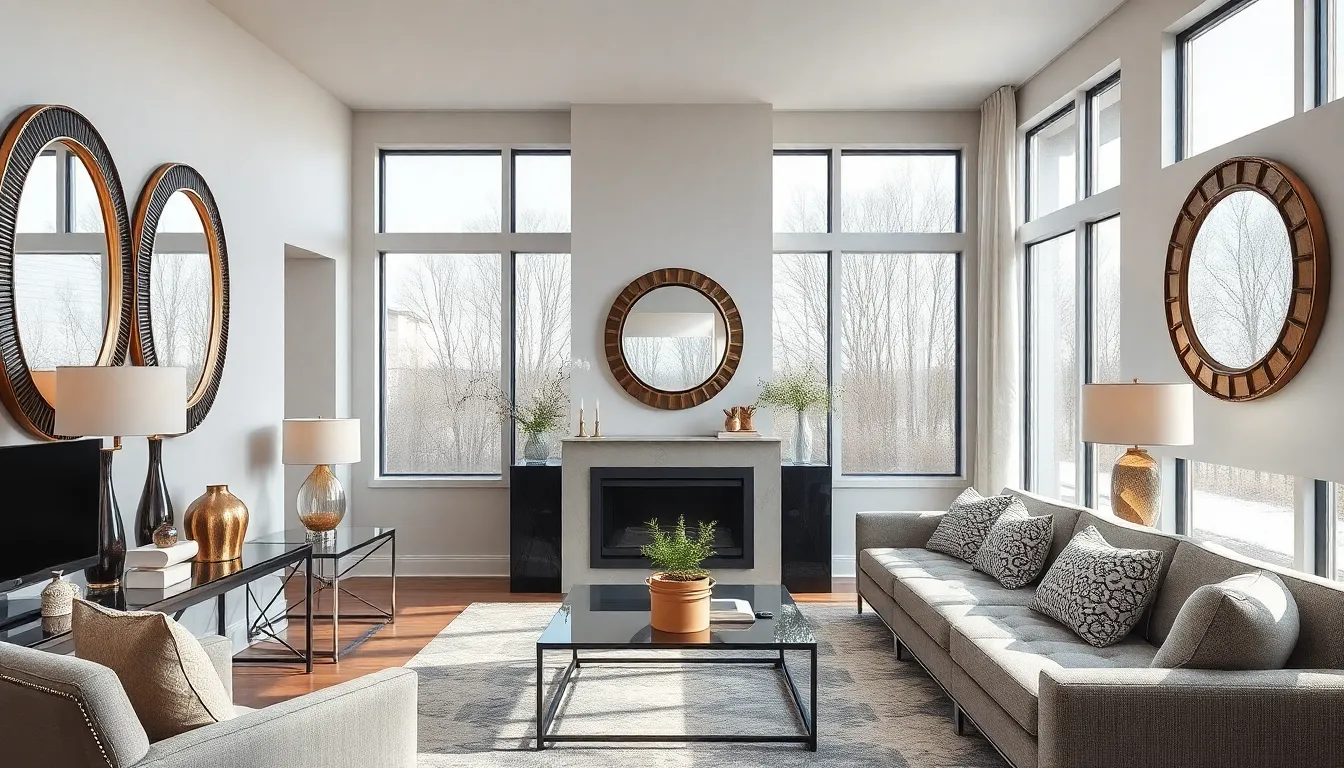
Building on strategic mirror placement, we can harness the power of reflective surfaces to amplify natural light throughout our homes. These proven techniques help us brighten rooms while creating the illusion of expanded space.
Place Mirrors Adjacent to Light Sources
Positioning mirrors near windows or lamps creates an immediate brightening effect by reflecting both natural and artificial light throughout the room. We recommend placing mirrors at a 45-degree angle to windows to capture the maximum amount of incoming sunlight and distribute it evenly across the space.
Strategic placement next to table lamps or floor lamps doubles the illumination output, making rooms appear larger and more inviting. Mirror positioning directly across from light sources creates stunning visual depth while maximizing the brightness potential of every light fixture in our homes.
Wall-mounted mirrors flanking pendant lights or chandeliers amplify their glow, creating dramatic lighting effects that transform ordinary spaces into sophisticated environments. We’ve found that mirrors positioned within three feet of any light source provide the most noticeable brightness enhancement.
Use Mirrored Tiles for Subtle Reflection
Mirrored tiles offer a sophisticated alternative to traditional large mirrors, creating subtle reflective effects that add depth without overwhelming smaller spaces. These versatile tiles work particularly well as backsplashes in kitchens or accent walls in bathrooms, where they catch and distribute light naturally.
Installation of mirrored tiles in geometric patterns creates visual interest while maintaining the light-improving benefits we’re seeking. Subway-style mirrored tiles or hexagonal shapes provide modern appeal while reflecting light from multiple angles throughout the day.
Small mirrored tiles arranged in mosaic patterns serve as functional art pieces that brighten walls without the commitment of large mirror installations. We can use these tiles to create custom designs that complement our existing decor while maximizing natural light distribution.
Install Mirrors in Dark Corners
Dark corners benefit tremendously from strategic mirror placement, as these reflective surfaces help capture and redistribute any available light to reduce shadows and enhance overall room ambiance. Corner mirrors work especially well in rooms with limited natural light sources.
Angled corner mirrors create the illusion of additional space while reflecting light from windows or fixtures positioned elsewhere in the room. We recommend using corner mirrors with beveled edges to add sophistication while maximizing the light-reflecting potential.
Tall mirrors positioned in dark corners near doorways help bounce light from adjacent rooms, creating a brighter transition between spaces. Floor-to-ceiling corner mirrors provide maximum light distribution while making rooms feel significantly more open and airy than their actual dimensions suggest.
Style Your Bedroom with Functional Mirror Decor
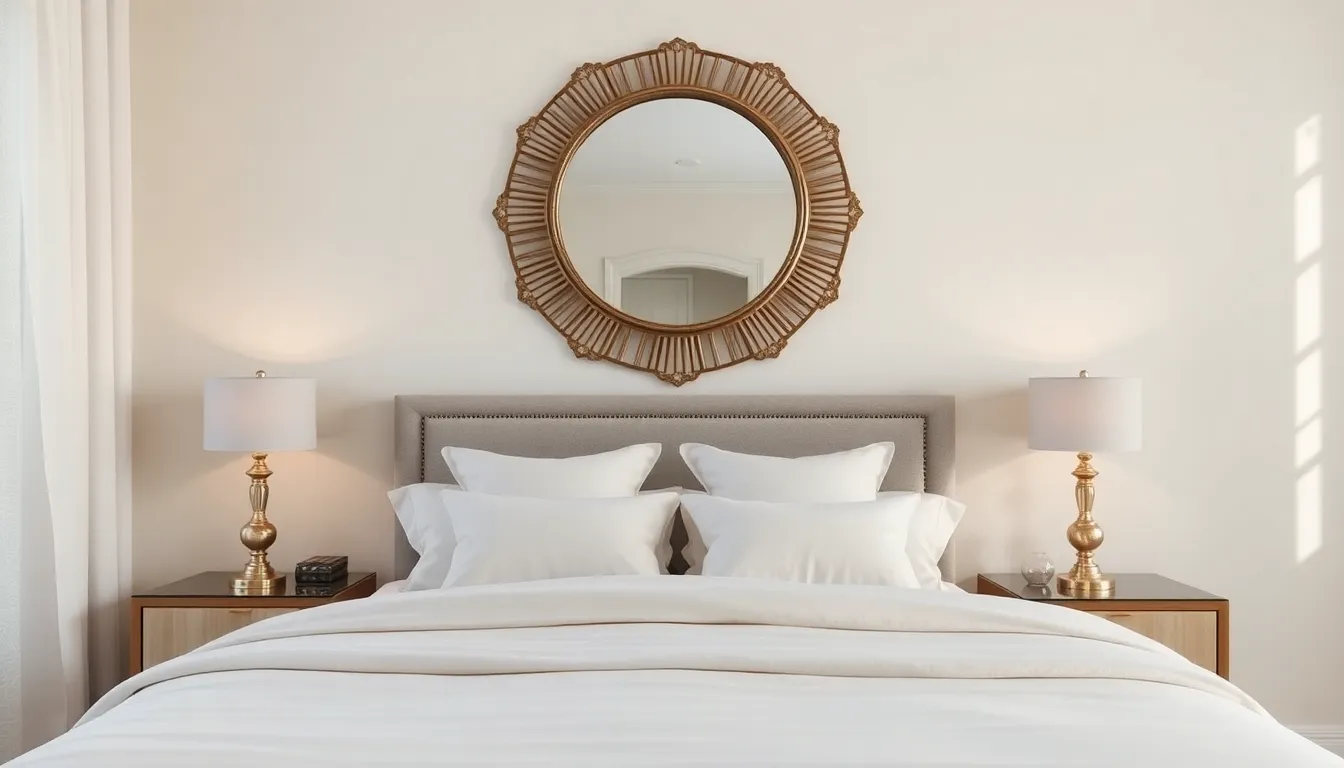
Wall mirrors transform bedrooms into sophisticated retreats that combine aesthetic appeal with practical functionality. We’ll explore strategic mirror placement techniques that maximize natural light reflection while creating visually expanded spaces and stunning focal points.
Mount Mirrors Above Nightstands
Mirrors positioned above nightstands create instant symmetry and visual balance in your bedroom design. We recommend placing these reflective surfaces directly behind table lamps to enhance ambient lighting and produce a warm, inviting glow throughout the evening hours.
Strategic placement of nightstand mirrors serves both decorative and functional purposes in your daily routine. Symmetrical arrangements work particularly well in master bedrooms where balanced aesthetics create a sense of harmony and sophistication.
Consider the scale relationship between your nightstand mirrors and the furniture below them. We suggest choosing mirrors that measure approximately two-thirds the width of your nightstands to maintain proper visual proportions and avoid overwhelming the space.
Create a Vanity Area with Illuminated Mirrors
Transform any dresser or small table into a functional vanity space using strategically placed wall mirrors with enhanced lighting features. LED or backlit mirror installations provide optimal illumination for daily grooming routines while adding a luxurious spa-like atmosphere to your bedroom.
Bevelled or framed mirrors introduce dimensional depth and sophisticated detail to vanity arrangements. We recommend incorporating decorative elements like elegant trays, perfume bottles, and coordinated table lamps to complete the styling vignette.
Position your vanity mirror at eye level when seated to ensure comfortable use for makeup application and hair styling. Surrounding accent lighting, such as wall sconces or decorative string lights, can supplement the mirror’s built-in illumination for enhanced visibility.
Use Mirrors as Headboard Alternatives
Large statement mirrors installed above beds function as striking headboard alternatives that bring vertical height and visual interest to bedroom walls. Round or rectangular mirrors in simple or ornate frames serve as captivating focal points, particularly effective in minimalist bedroom designs.
Creative groupings of multiple mirrors can break up negative wall space while introducing ever-changing visual intrigue. We suggest arranging a trio of coordinated mirrors or selecting a single textured piece with unique design elements to anchor your sleeping area.
Mirror headboard alternatives work exceptionally well in compact bedrooms where traditional headboards might overwhelm the space. These reflective installations amplify natural light from nearby windows while creating the illusion of expanded room dimensions and enhanced ceiling height.
Add Character to Hallways with Creative Mirror Displays
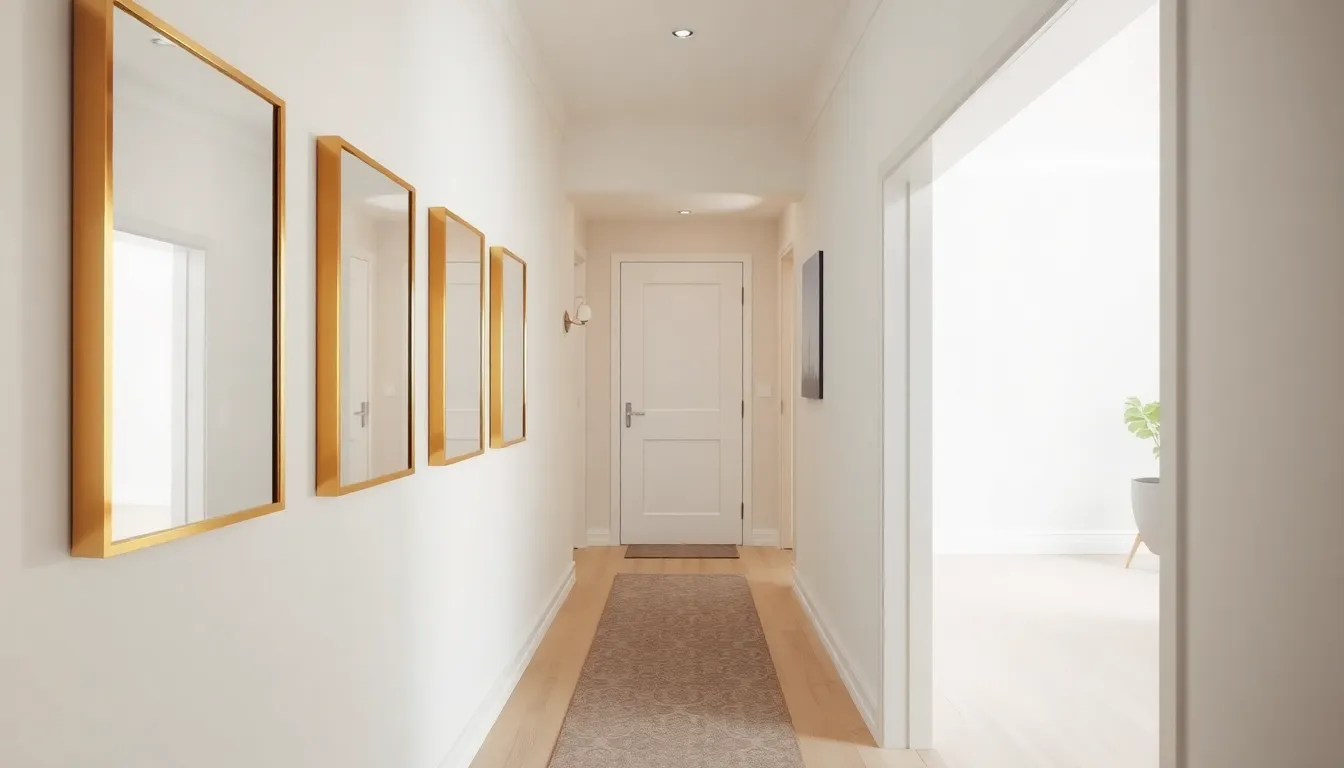
Hallways offer unique opportunities to experiment with mirror arrangements that transform these transitional spaces into stunning design statements. We’ll explore three proven techniques that interior designers use to maximize both visual impact and functionality in corridor spaces.
Install a Series of Identical Mirrors
Symmetrical arrangements create powerful visual continuity that makes hallways feel more spacious and sophisticated. We recommend placing identical mirrors side by side along hallway walls to establish a sense of rhythm and flow. This technique works particularly well with rectangular or square mirrors that measure 18 to 24 inches in width.
Strategic spacing between identical mirrors should maintain 6 to 12 inches of wall space for optimal visual balance. We suggest mounting mirrors at eye level, approximately 60 inches from the floor, to ensure they reflect natural light effectively throughout the corridor. Multiple identical mirrors also double the light reflection, making narrow hallways appear significantly brighter and more welcoming.
Frame coordination amplifies the sophisticated effect when using multiple identical pieces. We’ve found that matching metallic frames in brass, chrome, or black create the most cohesive look while complementing various interior styles from modern to traditional.
Create Visual Interest with Asymmetrical Arrangements
Asymmetrical placement adds modern artistic flair by positioning mirrors at different heights and angles throughout hallway spaces. We recommend starting with one larger mirror as an anchor piece, then surrounding it with smaller mirrors of varying shapes to create ever-changing visual movement.
Height variation should range from 48 to 72 inches from the floor to achieve the most compelling asymmetrical effect. We suggest using a combination of round, hexagonal, and rectangular mirrors to introduce geometric diversity while maintaining overall design harmony.
Angular positioning creates sophisticated art installations when mirrors are mounted at slight tilts or rotated orientations. We’ve discovered that rotating square mirrors 45 degrees transforms them into diamond shapes, adding unexpected visual intrigue to otherwise straight corridor lines.
Use Mirrors to Define Transition Spaces
Transition points benefit significantly from strategic mirror placement near staircases, doorways, and room entrances. We recommend installing large statement mirrors measuring 36 to 48 inches in these key locations to create natural flow between different areas of your home.
Entryway positioning works exceptionally well when mirrors are mounted above console tables or near front doors. We suggest placing mirrors at these transition points to provide both functional benefits for last minute appearance checks and spatial expansion effects that make entryways feel more grand.
Staircase enhancement occurs when mirrors are positioned on stair landings or adjacent walls to reflect both natural and artificial light sources. We’ve found that mirrors placed near staircases create the illusion of expanded vertical space while adding safety benefits through improved visibility in these transitional areas.
Incorporate Vintage and Antique Mirrors for Timeless Appeal

Adding vintage and antique mirrors brings historical charm and sophisticated character to our modern interiors. These timeless pieces serve as both functional elements and captivating focal points that elevate any room’s aesthetic appeal.
Hunt for Unique Thrift Store Finds
Thrift stores and yard sales offer incredible opportunities to discover unique vintage mirrors at affordable prices. We’ve found that these secondhand treasures often feature intricate details and craftsmanship that simply can’t be replicated in mass-produced pieces. Estate sales particularly yield ornate antique mirrors with original gilding and beveled glass that add instant character to our spaces.
Flea markets provide another excellent hunting ground for distinctive mirror finds. Look for pieces with unusual shapes, decorative frames, or patina that tells a story. We recommend examining the mirror’s backing and frame construction to ensure structural integrity before purchasing.
Online marketplaces and antique shops expand our search beyond local options. Facebook Marketplace and Craigslist frequently feature vintage mirrors from estate cleanouts. Search using terms like “ornate mirror,” “gilded frame,” or exact decades to narrow down results effectively.
Restore and Repurpose Old Mirrors
Restoration techniques can transform weathered mirrors into stunning decorative elements. Applying gilding wax to tarnished frames instantly revives their original luster and creates an authentic antique appearance. We’ve successfully used chalk paint to modernize vintage pieces while maintaining their character.
Refinishing damaged frames requires minimal investment but yields dramatic results. Sand lightly to remove loose paint or rust, then apply primer before adding your chosen finish. Metallic spray paint works exceptionally well on ornate details that are difficult to reach with brushes.
Repurposing mirrors beyond wall mounting creates unique decorative opportunities. Consider transforming large antique mirrors into distinctive headboards or using smaller pieces as elegant table centerpieces. We’ve seen stunning results when vintage hand mirrors become part of vanity displays or bookshelf styling.
Mirror silvering restoration brings cloudy or spotted glass back to life. Professional resilvering services can repair damaged mirror backing, though DIY mirror spray kits work well for minor imperfections. Always clean the glass thoroughly before attempting any restoration work.
Mix Antique Pieces with Modern Elements
Combining vintage mirrors with contemporary furniture creates visually appealing contrast that defines sophisticated interiors. We position ornate antique mirrors above sleek modern consoles to establish focal points that bridge different design eras. This juxtaposition highlights the unique qualities of both pieces.
Balancing antique and modern styles requires thoughtful consideration of proportions and placement. Large vintage mirrors work beautifully in minimalist spaces where they become statement pieces without overwhelming clean lines. Conversely, smaller antique mirrors can soften the hard edges of ultra-modern furniture.
Color coordination helps unify disparate design elements throughout our rooms. Choose vintage mirrors with frame colors that complement existing modern pieces, or paint antique frames to match contemporary color schemes. Metallic finishes like brass or chrome provide natural bridges between old and new.
Strategic grouping enhances the impact of mixed vintage and modern elements. We create gallery walls that combine antique mirrors with contemporary artwork, ensuring consistent spacing and complementary frame styles. This approach allows each piece to contribute to a cohesive overall design while maintaining individual character.
Conclusion
We’ve explored countless ways to transform your home with strategic mirror placement and creative decorating ideas. From gallery walls that capture light to vintage finds that add character every technique we’ve shared can elevate your space without breaking the budget.
The key is experimenting with different sizes shapes and placements until you find what works best for your unique space. Remember that mirrors aren’t just functional pieces – they’re powerful design tools that can completely change how a room feels and looks.
Start small with one statement mirror or corner placement and gradually build your confidence. Your walls are waiting for that perfect reflective touch that’ll make your guests wonder how you created such an impressive space.
Frequently Asked Questions
How can mirrors make a room look bigger?
Mirrors create the illusion of space by reflecting light and views, effectively doubling the visual area of a room. When positioned opposite windows, they bounce natural light throughout the space, making it appear brighter and more expansive. Full-length mirrors in narrow hallways and corner mirrors in tight spaces are particularly effective for maximizing perceived square footage.
What’s the best way to create a mirror gallery wall?
Start with a large statement mirror as your focal point, then surround it with smaller mirrors of varying sizes and shapes. Mix different frame styles while maintaining color coordination to avoid chaos. Plan your layout on the floor first, maintain consistent spacing between pieces, and ensure the arrangement creates a dynamic visual rhythm.
Where should I place mirrors to maximize natural light?
Position mirrors adjacent to windows at a 45-degree angle to capture and distribute sunlight effectively. Place mirrors opposite light sources to double brightness, and install them in dark corners to redistribute light throughout the room. Mirrors near lamps and sconces also amplify artificial lighting for enhanced ambiance.
How do I choose the right size mirror for above furniture?
Select mirrors that are approximately two-thirds the width of the furniture piece below for proper visual proportions. The mirror should complement the size and style of the furniture while creating balanced aesthetics. For nightstands, mount mirrors at eye level, and for dressers, ensure the mirror enhances the furniture’s functionality.
Can I mix antique mirrors with modern decor?
Yes, mixing antique mirrors with contemporary furniture creates visually appealing contrasts that add character and sophistication. Focus on color coordination and strategic grouping to maintain harmony. Vintage mirrors serve as conversation starters while bringing historical charm to modern interiors, making them perfect statement pieces.
What are mirrored tiles and how should I use them?
Mirrored tiles are small reflective squares that create subtle reflective effects in smaller spaces. They work excellently as backsplashes or accent walls, offering a sophisticated alternative to large mirrors. Use them in areas where you want gentle light reflection without the dramatic impact of full-sized mirrors.
How can mirrors enhance hallway design?
Install a series of identical mirrors for symmetry and flow, or create visual interest with asymmetrical arrangements. Use large statement mirrors in key locations to enhance aesthetics and functionality. Maintain strategic spacing and consistent height for optimal visual balance, and position mirrors to define transition spaces near staircases and doorways.

